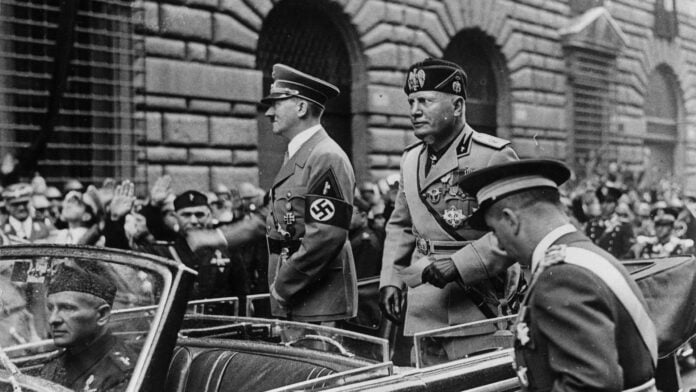When we talk about the nature of fascism (fascist) among historians and political scientists, there has been considerable disagreement among them. On one side it is a socially radical movement while on the other side it claims it is an extreme form of conservatism inspired by the 19th-century backlash against the ideas of the enlightenment. Some consider it extremely irrational whereas others are impressed with the rationality with which it has served the material interests of its supporters.
It has no universally accepted definition. We can consider the number of general characteristics that the fascist movement kept between 1922 and 1945.
Opposition to Marxism
From totalitarian communism to democratic socialists, fascists made no secret of their hatred of marxism on all forums. Fascists promised to deal with more pressure from marxism than they had dealt with earlier democratic right parties. Mussolini was the first fascist leader who made his reputation among the population. He maintained armed squads which were known as Blackshirts.
Nazi party made by Hitler to swing out left activists from Germany were mostly the retired soldier from world war 1. Many soldiers in nazi had also served in the freikorps. When Hitler came to power he sent hundreds of Marxists to concentration camps. He also attacked red neighborhoods with police raids and beatings.
For the french fascist leader, marxism was the forefront enemy. Valois, the leader of Faisecu, declared the police to eliminate socialism and everything related to it. That became their general guiding principle. They declared that they would defend the hierarchy of the classes…, everyone knows that there will be different social levels, the strong and the weak, the rich and the poor, the governing and the governed.
Opposition to parliamentary democracy
Fascist leaders criticize parliamentary democracy at its best because they felt Marxis the greatest there. Hitler was of the view that democracy undermined the natural selection of a ruling elite. In his view, democracy is nothing more than the systematic cultivation of human failure. Our Spain will not emerge through the electoral process; rather it would be defended by the poets with the weapons in their hands as the words of Primo de Rivera.
All political parties in Japan, even right-wing groups, were dissolved and other political freedoms by the Tojo dictatorship. Mussolini and Hitler despite their disliking of political rights for the population, promised their followers, willing to engage in political freedom after coming to power.
Conclusion
The fascist states, especially Germany under the command of Hitler gave the theory of racial existence. He believed different people have different rationales. He scientifically proved that Aryans were the best among the races who were culture creators. He had a view that the Japanese were a culturally carrying nation and reluctant to innovate themselves. Hitler put the jew on the list of culture destroyers. Hitler believed that Jews try to interbreed with the best races to destroy the culture so they have no right to live in this world. He also believed that capitalism, communism, and socialism are the ways of Jews to destroy and penetrate the impurity to destroy the cultures among superior races.













